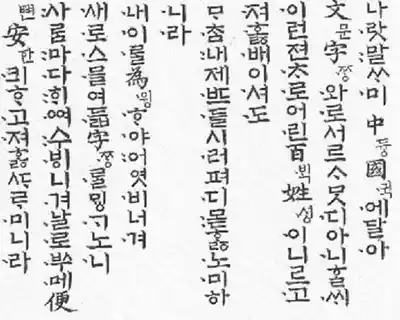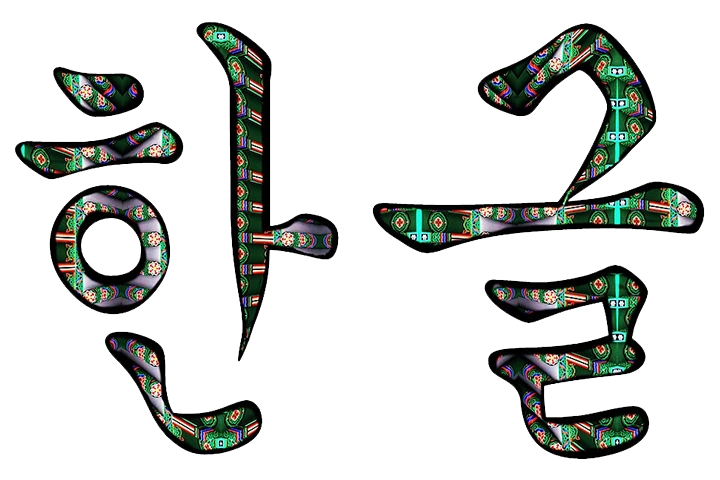Hangul (한글) is Korea’s unique writing system, created in the 15th century by King Sejong, the fourth king of the Joseon Dynasty. It combines scientific principles with a spirit of love for the people to facilitate their language use, making it a globally unique writing system.
Background and History of Creation

- Before the invention of Hangul: Before the creation of Hangul, complex Chinese characters were borrowed to write the Korean language. These were difficult to learn, making reading and writing difficult for the majority of the common people.
- Creation and Promulgation: King Sejong the Great, concerned about the difficulties faced by the common people, created 28 new characters in 1443. In 1446, he promulgated the Hunminjeongeum (훈민정음; literally, “The Proper Sounds for Teaching the People”), a book explaining these characters.
- UNESCO Memory of the World: The Hunminjeongeum Haeryebon (훈민정음 해례본; Commentary on the Original Text) was inscribed on the UNESCO Memory of the World Register in 1997 in recognition of its originality and scientific value.
Scientific Principles and Characteristics
Linguists consider Hangul one of the most scientific and efficient writing systems in the world.
- Pronunciation: Consonants are modeled after the shapes of the human vocal organs (tongue, lips, teeth, etc.) used for pronunciation.
- Cheonjiin (천지인; 天地人) Principle: Vowels are created by combining the shapes of the sky (ㆍ, arae-a), the earth (ㅡ), and the human (ㅣ).
- Easy to Learn: The systematic principles of adding strokes to basic letters and combining letters make Hangul easy for anyone to learn and master.
- Modern Structure: Today, Hangul consists of 14 consonants and 10 vowels, which can be combined to express almost any sound.
In conclusion, Hangul revolutionized the written language of Koreans and is now the official writing system of the Republic of Korea. In Korea, October 9th is designated as Hangul Day, commemorating the creation of Hangul.
List of Jamo (letters)
- Consonants:
- 14 Basic consonants: ㄱ ㄴ ㄷ ㄹ ㅁ ㅂ ㅅ ㅇ ㅈ ㅊ ㅋ ㅌ ㅍ ㅎ
- Double consonants: ㄲ ㄸ ㅃ ㅆ ㅉ
- Compound consonants: ㄳ ㄵ ㄶ ㄺ ㄻ ㄼ ㄽ ㄾ ㄿ ㅀ ㅄ
- Vowels:
- 10 Basic vowels: ㅏ ㅑ ㅓ ㅕ ㅗ ㅛ ㅜ ㅠ ㅡ ㅣ
- Compound vowels: ㅐ ㅒ ㅔ ㅖ ㅘ ㅙ ㅚ ㅝ ㅞ ㅟ ㅢ
- Obsolete:
- Consonants: ㅿ ㆁ ㆆ
- Vowels: ㆍ
Note:
- Among the double consonants, ㄲ and ㅆ are used for both initial(Choseong) and final(Jongseong) consonants, but ㄸ, ㅃ, and ㅉ are used only for initial consonants.
- Compound consonants are used only in final consonants.
